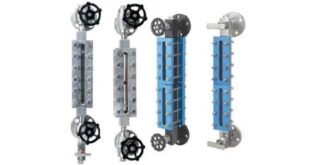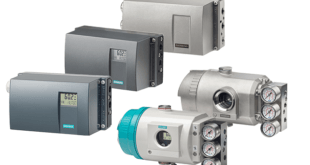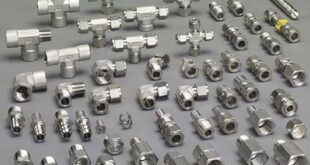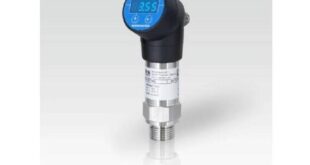Introduction to Process Transmitters
A. Decoding the Role of Process Transmitters
In the intricate web of industrial processes, process transmitters emerge as unsung heroes, silently orchestrating the harmony between physical parameters and control systems. These instrumental devices play a pivotal role in gathering, interpreting, and transmitting crucial data that fuels the efficiency, safety, and reliability of industrial operations.
B. Necessity and Significance
At the core of industrial automation, process transmitters serve as the eyes and ears of the control system. Their primary function is to bridge the gap between the tangible world of physical parameters—such as temperature, pressure, level, and flow—and the digital realm of control and monitoring systems. The significance of process transmitters lies in their ability to transform real-time data into actionable insights, fostering optimal process control and management.
II. Types of Process Transmitters
A. Temperature Transmitters
Working Principle: Temperature transmitters operate on the foundational principle of electrical resistance. Sensors, including Resistance Temperature Detectors (RTDs) or thermocouples, detect temperature-induced changes in resistance or voltage. These variations are then transformed into standardized signals for seamless integration into control systems.
Types: RTD Temperature Transmitters, Thermocouple Temperature Transmitters, Infrared Temperature Transmitters.
B. Pressure Transmitters
Working Principle: Pressure transmitters rely on sensing the force exerted by a fluid on a diaphragm or sensing element. This force causes a deflection, which is then converted into an electrical signal proportional to the pressure.
Types: Absolute Pressure Transmitters, Gauge Pressure Transmitters, Differential Pressure Transmitters.
C. Level Transmitters
Working Principle: Level transmitters employ diverse principles such as capacitance, ultrasonic waves, radar signals, hydrostatic pressure, or differential pressure to measure and transmit data about the level of liquids or solids in a container.
Types: Capacitance Level Transmitters, Ultrasonic Level Transmitters, Radar Level Transmitters, Hydrostatic Level Transmitters.
D. Flow Transmitters
Working Principle: Flow transmitters harness principles like differential pressure, electromagnetic induction, ultrasonic waves, or thermal dispersion to measure the rate of fluid flow and convert it into electrical signals.
Types: Differential Pressure Flow Transmitters, Electromagnetic Flow Transmitters, Ultrasonic Flow Transmitters, Thermal Dispersion Flow Transmitters.
E. Differential Pressure Transmitters
Working Principle: These transmitters measure the pressure difference between two points in a system. The pressure difference is then converted into an electrical signal for further processing.
Types: Wet/Wet Differential Pressure Transmitters, Dry/Dry Differential Pressure Transmitters.
III. Specifications of Process Transmitters
A. Measurement Range
The measurement range of a process transmitter defines the span within which it can effectively measure a specific parameter. Selecting an appropriate range is crucial for accurate data acquisition and control.
B. Accuracy
Accuracy is a pivotal specification, indicating how closely the output of the transmitter aligns with the actual value of the measured parameter. It is typically expressed as a percentage of the full-scale output.
C. Resolution
Resolution refers to the smallest change in the measured parameter that a transmitter can detect. Higher resolution enhances precision, particularly in applications where small variations are significant.
D. Response Time
The response time of a transmitter signifies how quickly it can react to changes in the measured parameter. In dynamic conditions, faster response times are critical for accurate and timely control.
E. Communication Protocols
Modern process transmitters often support various communication protocols such as HART, Profibus, or Foundation Fieldbus. These protocols facilitate advanced communication, diagnostics, and configuration capabilities.
IV. Working Principles of Process Transmitters
A. Temperature Transmitters
Working Principle: The essence of temperature transmitters lies in the temperature-dependent properties of materials, especially electrical resistance. Two common types include:
- RTD Temperature Transmitters:
- Principle: RTDs utilize the fact that the electrical resistance of certain metals, commonly platinum, increases predictably with temperature.
- Output Signal: Changes in resistance are converted into standardized signals such as 4-20 mA or voltage.
- Thermocouple Temperature Transmitters:
- Principle: Thermocouples generate voltage when exposed to different temperatures at each end. This voltage is directly proportional to the temperature difference.
- Output Signal: The generated voltage is translated into standard signals for seamless integration.
- Infrared Temperature Transmitters:
- Principle: These transmitters measure the infrared radiation emitted by an object, correlating it to its temperature.
- Output Signal: The temperature is translated into electrical signals compatible with control systems.
B. Pressure Transmitters
Working Principle: Pressure transmitters operate based on the fundamental principle of sensing the force exerted by a fluid on a sensing element. Key types include:
- Absolute Pressure Transmitters:
- Principle: These transmitters measure pressure relative to a perfect vacuum.
- Output Signal: The output corresponds to the absolute pressure, facilitating precise pressure control.
- Gauge Pressure Transmitters:
- Principle: Gauge pressure transmitters measure pressure relative to atmospheric pressure.
- Output Signal: The output provides information about the pressure above atmospheric conditions.
- Differential Pressure Transmitters:
- Principle: These transmitters gauge the difference in pressure between two points in a system.
- Output Signal: The pressure difference is translated into electrical signals for further processing.
C. Level Transmitters
Working Principle: Level transmitters employ various principles to measure and transmit data about the level of liquids or solids. Different types include:
- Capacitance Level Transmitters:
- Principle: These transmitters measure the change in capacitance between the sensor and the fluid, which is proportional to the level.
- Output Signal: Changes in capacitance are converted into electrical signals for control systems.
- Ultrasonic Level Transmitters:
- Principle: Ultrasonic waves are emitted and the time taken for the wave to return after reflecting off the liquid surface is used to calculate the level.
- Output Signal: The time measurement is translated into electrical signals for monitoring and control.
- Radar Level Transmitters:
- Principle: Radar signals are sent to bounce off the liquid surface, and the time taken for the signal to return is used to calculate the level.
- Output Signal: The time measurement is converted into electrical signals compatible with control systems.
- Hydrostatic Level Transmitters:
- Principle: These transmitters measure the pressure exerted by the fluid column above the sensor.
- Output Signal: The hydrostatic pressure is converted into electrical signals for accurate level measurement.
D. Flow Transmitters
Working Principle: Flow transmitters harness various principles to measure the rate of fluid flow. Key types include:
- Differential Pressure Flow Transmitters:
- Principle: These transmitters measure the pressure drop across an obstruction in the flow path.
- Output Signal: The pressure drop is translated into electrical signals, providing information about flow rates.
- Electromagnetic Flow Transmitters:
- Principle: Flow-induced voltage is measured as a conductive fluid passes through a magnetic field.
- Output Signal: The induced voltage is translated into electrical signals corresponding to flow rates.
- Ultrasonic Flow Transmitters:
- Principle: Ultrasonic waves are transmitted through the fluid, and the time taken for the waves to travel upstream and downstream is used to calculate flow rates.
- Output Signal: The time measurements are converted into electrical signals for precise flow control.
- Thermal Dispersion Flow Transmitters:
- Principle: These transmitters measure the change in heat transfer as the fluid flows over a heated sensor.
- Output Signal: Changes in heat transfer are translated into electrical signals representing flow rates.
E. Differential Pressure Transmitters
Working Principle: Differential pressure transmitters measure the pressure difference between two points in a system. Types include:
- Wet/Wet Differential Pressure Transmitters:
- Principle: These transmitters measure the pressure difference between two points while both sides are in contact with the process fluid.
- Output Signal: The pressure difference is translated into electrical signals for further processing.
- Dry/Dry Differential Pressure Transmitters:
- Principle: Dry/dry transmitters also measure pressure difference but without direct contact with the process fluid.
- Output Signal: The pressure difference is converted into electrical signals compatible with control systems.
V. Output Signals of Process Transmitters
The output signals of process transmitters are crucial as they convey the measured data to control systems for analysis, monitoring, and decision-making. Different types of transmitters generate various output signals, each with its advantages and suitability for specific applications.
A. Analog Output Signals
- 4-20 mA Signal:
- Description: A widely used standard current loop signal in industrial applications.
- Advantages: Offers a robust and reliable signal. The 4 mA represents the lowest value, and 20 mA represents the highest.
- Applications: Common in pressure, temperature, level, and flow transmitters.
- 0-5 V and 0-10 V Signals:
- Description: Voltage signals proportional to the measured parameter.
- Advantages: Suitable for applications where voltage signals are preferred.
- Applications: Common in various types of transmitters.
B. Digital Output Signals
- HART (Highway Addressable Remote Transducer) Protocol:
- Description: Combines analog signal (4-20 mA) with digital communication for enhanced functionality.
- Advantages: Enables two-way communication, allowing for additional data transmission, diagnostics, and configuration.
- Applications: Common in smart transmitters, enhancing communication capabilities.
- Profibus and Foundation Fieldbus Protocols:
- Description: Digital communication protocols providing advanced features for process control.
- Advantages: Enable digital communication with multiple devices, improving efficiency and data accuracy.
- Applications: Widely used in various industrial automation applications.
C. Pneumatic Output Signals
- 3-15 psi Signal:
- Description: A traditional pneumatic signal used in some older systems.
- Advantages: Provides a standardized pressure range for compatibility with pneumatic systems.
- Applications: Found in legacy systems where pneumatic control is prevalent.
D. Smart Transmitters
- Digital Smart Transmitters:
- Description: Incorporate microprocessors for digital signal processing and communication.
- Advantages: Offer enhanced functionality, self-diagnostics, and digital communication capabilities.
- Applications: Common in modern industrial processes for improved control and monitoring.
VI. Advantages of Process Transmitters
Understanding the advantages of employing process transmitters illuminates their significance in industrial applications:
A. Precision and Accuracy
- High Accuracy: Process transmitters provide precise and accurate measurements, ensuring optimal control of industrial processes.
B. Remote Monitoring and Control
- Remote Capabilities: Smart transmitters with digital communication protocols enable remote monitoring, control, and diagnostics, reducing the need for manual intervention.
C. Versatility
- Versatility: Process transmitters come in various types, making them adaptable to different industrial parameters and environments.
D. Non-Intrusive Measurement
- Non-Contact Measurement: Certain types of transmitters, like ultrasonic or radar level transmitters, allow non-contact measurement, reducing the risk of sensor contamination and wear.
E. Enhanced Communication
- Digital Communication: Smart transmitters with digital protocols enhance communication capabilities, allowing for additional data transmission and configuration.
VII. Applications of Process Transmitters
Process transmitters find extensive applications across diverse industries, contributing to efficiency, safety, and control in various processes. Here are some notable applications:
A. Chemical and Petrochemical Industry
- Temperature Control: Temperature transmitters ensure precise temperature control in chemical reactions, preventing overheating or underheating.
- Pressure Management: Pressure transmitters monitor and control pressure in reaction vessels, ensuring safe and efficient chemical processes.
B. Water and Wastewater Treatment
- Level Measurement: Level transmitters are used to monitor water levels in tanks and reservoirs, optimizing water treatment processes.
- Flow Control: Flow transmitters play a crucial role in regulating the flow of water and chemicals through treatment systems.
C. Oil and Gas Industry
- Pressure Monitoring: Pressure transmitters are employed to monitor pressure in pipelines, ensuring the safe transport of oil and gas.
- Level Measurement: Level transmitters prevent overfilling or emptying of storage tanks, enhancing operational safety.
D. Food and Beverage Processing
- Temperature Control: Temperature transmitters regulate the temperature in food processing, ensuring quality and safety.
- Flow Measurement: Flow transmitters monitor the flow of liquids and gases in various stages of production.
E. Pharmaceuticals and Biotechnology
- Pressure Control: Pressure transmitters contribute to maintaining optimal pressure in bioreactors and pharmaceutical manufacturing processes.
- Level Monitoring: Level transmitters ensure precise control of fluid levels in storage vessels, enhancing the efficiency of pharmaceutical production.
These applications underscore the versatility and indispensable nature of process transmitters across a wide spectrum of industries.
VIII. Future Trends in Process Transmitter Technology
As technology continues to advance, several trends are expected to shape the future of process transmitter technology:
A. Industry 4.0 Integration
- Smart Manufacturing: Process transmitters are anticipated to play a more integral role in Industry 4.0, contributing to the evolution of smart manufacturing processes.
- Data Analytics: Enhanced data analytics capabilities will enable better decision-making and predictive maintenance.
B. Miniaturization and Enhanced Portability
- Compact Designs: Advancements in miniaturization will lead to smaller, more portable transmitters, allowing for easier installation and integration into various systems.
- Improved Power Efficiency: Miniaturized transmitters may come with improved power efficiency, reducing energy consumption.
C. Advanced Sensor Technologies
- Sensors with Enhanced Capabilities: Development of advanced sensors will enhance the accuracy, reliability, and versatility of process transmitters.
- Multi-Sensor Integration: Transmitters may integrate multiple sensors to provide comprehensive data on various process parameters.
D. Environmental Monitoring Capabilities
- Comprehensive Monitoring: Future transmitters may incorporate additional environmental monitoring capabilities, providing information on factors such as temperature, pressure, humidity, and more.
- Holistic Process Understanding: This holistic understanding will contribute to better process control and environmental sustainability.
These trends herald an exciting future for process transmitters, promising increased efficiency, reliability, and adaptability in industrial processes.
IX. Conclusion
In the intricate tapestry of industrial automation, process transmitters stand as indispensable pillars, translating the language of physical parameters into the digital realm. This comprehensive exploration into the world of process transmitters has unveiled their diversity, significance, and the pivotal roles they play across various industries.
From temperature transmitters meticulously managing chemical reactions to pressure transmitters safeguarding the transport of oil and gas, and from level transmitters optimizing water treatment processes to flow transmitters regulating fluid dynamics in food processing – the applications are as diverse as the industries they serve.
The advantages of precision, versatility, and remote capabilities empower process transmitters to be the linchpin in achieving optimal operational efficiency and safety. As we look to the future, the integration of Industry 4.0, miniaturization, advanced sensor technologies, and environmental monitoring capabilities herald a new era of smart, efficient, and sustainable industrial processes.
In conclusion, the journey into the realm of process transmitters has been a voyage of discovery, highlighting their adaptability, reliability, and transformative impact on industrial landscapes. As technology continues to evolve, the role of process transmitters will only become more central, shaping the future of industrial automation and contributing to the advancement of smart manufacturing practices.
Whether in the chemical plant, water treatment facility, oil refinery, or pharmaceutical lab, process transmitters silently orchestrate the symphony of processes, ensuring harmony, efficiency, and safety. Their role is not merely technical; it’s foundational to the very fabric of modern industry.
As industries continue to evolve and innovate, so too will the technology of process transmitters evolve, adapting to the ever-changing needs and challenges of industrial processes. Through precision, adaptability, and the ability to communicate seamlessly with control systems, process transmitters remain at the forefront of technological advancements, driving the next wave of industrial revolutions.
In embracing the complexities of today’s industrial processes, process transmitters emerge not just as instruments but as essential partners in the pursuit of operational excellence. Their story is one of constant innovation, a story that unfolds in each hum of a chemical reaction, each surge of water through a treatment plant, and each precisely controlled flow in a manufacturing line.
In the dynamic landscape of industrial automation, process transmitters are not just devices; they are the silent architects of efficiency, the guardians of safety, and the enablers of progress. As industries continue to advance, the story of process transmitters will continue to evolve, contributing to the narrative of innovation, sustainability, and transformative change.
 Ontrose industrial corporation Inc. Engineering and supply of industrial projects
Ontrose industrial corporation Inc. Engineering and supply of industrial projects






